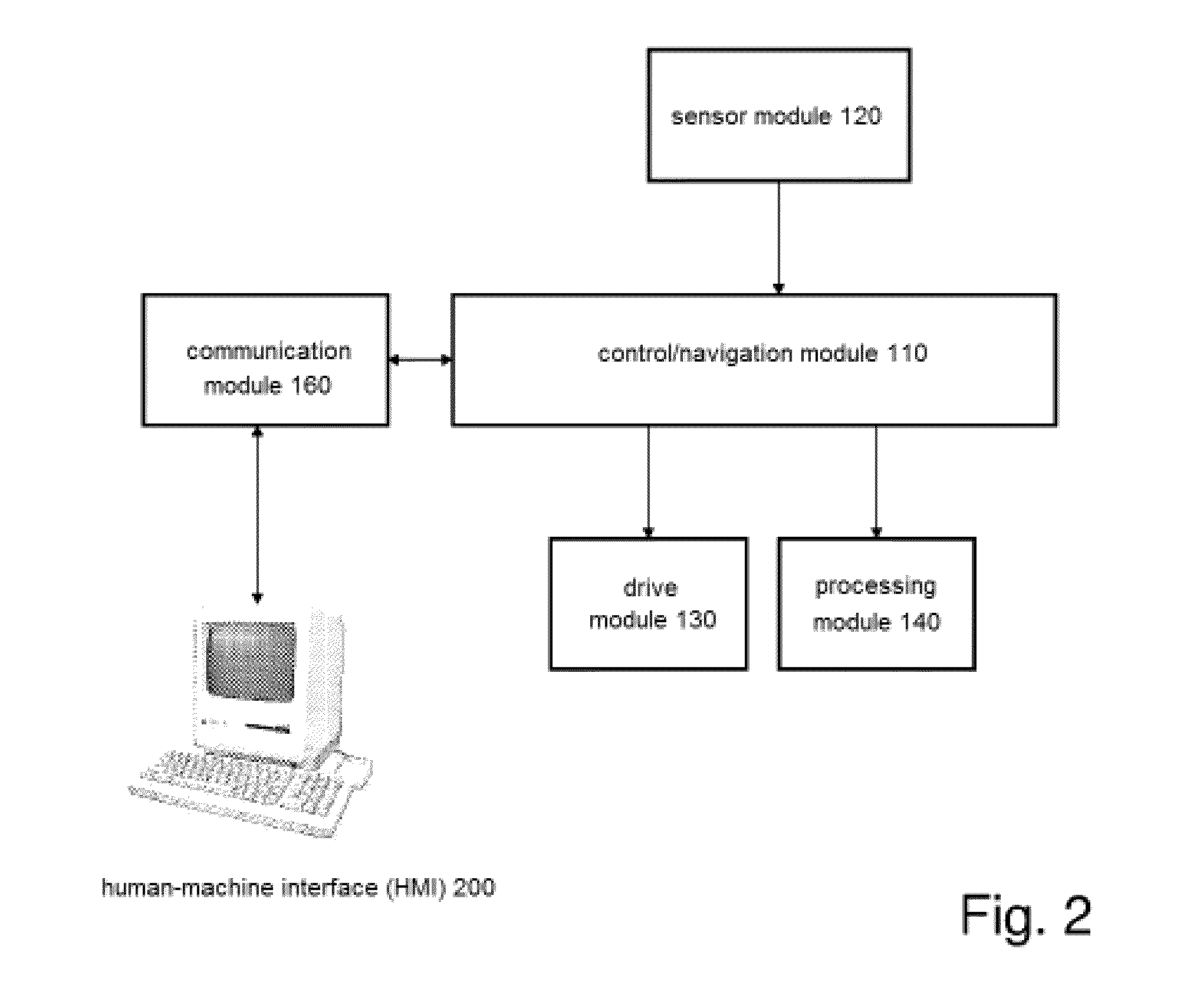Robot And Method For Autonomous Inspection Or Processing Of Floor Areas
a robot and floor technology, applied in the direction of process and machine control, carpet cleaning, instruments, etc., can solve the problems of difficult for the robot to carry out the processing completely autonomously, and are often perceived as annoying by users
- Summary
- Abstract
- Description
- Claims
- Application Information
AI Technical Summary
Benefits of technology
Problems solved by technology
Method used
Image
Examples
first example
[0065]During a processing operation (for example, triggered by a corresponding calendar setting of the user), the couch in the living room is shifted such that the region located behind it can no longer be approached or cleaned by the robot (for example, the couch was moved so close to the wall that the robot no longer has space between wall and couch). The user is out of the house during the processing operation and only comes back after completion of the processing operation. The robot cleans the remainder of the apartment, stores the present processing operation, and returns to its charging station.
[0066]Subsequently, the robot analyzes the map and ascertains whether a substantial cleaning benefit (i.e., an improvement of the “cleanness” of the apartment to be cleaned) could be achieved if the couch were shifted back to the original space. In the case in which a substantial cleaning benefit would occur, the robot informs the user (via the human-machine interface 200) about the no...
second example
[0070]During a cleaning operation, the space under the dining table is blocked with chairs, so that good cleaning coverage under the table is not possible. The robot omits this region and continues the cleaning at another point. After completion of the cleaning of the apartment, the robot returns to the base station. The analysis of the cleaning map in comparison to the stored map and to earlier cleaning results has the result that the omitted region is a typically strongly soiled region and therefore a greater cleaning benefit could be achieved. For this reason, the robot informs the user that the region under the table could not be cleaned, since the chair legs are too close together.
[0071]The user then has the possibility of making the region better accessible (for example: placing the chairs on the table) and prompting the robot to perform a renewed cleaning attempt of the omitted region with the aid of a “finish cleaning” button. Alternatively, however, the user could also conc...
third example
[0072]During a cleaning operation, the robot “discovers” that a door is closed or blocked. The robot cleans the remainder of the apartment and returns to its charging station. The analysis of the cleaning map carried out thereafter has the result that an entire room could no longer be approached and cleaned due to the closed door. Upon the query of the user (or on its own), the robot informs the user (via the human-machine interface 200) about the non-cleaned regions of the apartment in comparison to its last cleaning operations (in this case, the non-cleaned region corresponds to the closed room) and specifies a corresponding reason (for example, “Room could not be approached—door is closed”).
[0073]The user now has the possibility of engaging in the cleaning process insofar as he opens the doors so that the robot can move into the room. Subsequently, the user can give the robot (again via the human-machine interface 200, for example, a button on the robot) a “finish cleaning” comma...
PUM
 Login to View More
Login to View More Abstract
Description
Claims
Application Information
 Login to View More
Login to View More - Generate Ideas
- Intellectual Property
- Life Sciences
- Materials
- Tech Scout
- Unparalleled Data Quality
- Higher Quality Content
- 60% Fewer Hallucinations
Browse by: Latest US Patents, China's latest patents, Technical Efficacy Thesaurus, Application Domain, Technology Topic, Popular Technical Reports.
© 2025 PatSnap. All rights reserved.Legal|Privacy policy|Modern Slavery Act Transparency Statement|Sitemap|About US| Contact US: help@patsnap.com



